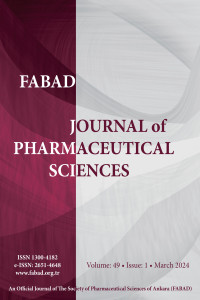Abstract
Accumulating scientific evidence shows that thyroid hormone synthesis and signaling are now recognized as one of the important targets of environmental chemicals, especially chemicals called endocrine disruptors. Endocrine disrupting chemicals (EDCs) are man-made chemicals and consist of different types of molecules, for instance some pesticides, plasticizers, flame retardants (FRs), surfactants, many of which can interfere with thyroid hormone synthesis or their actions. FRs, important members of endocrine disruptors, share similarities in their chemical structures when compared with thyroid hormones, and there is accumulating scientific findings pointing out that they may take part in the dysfunction of thyroid hormone homeostasis. The primary aim of using FRs is to minimize the risk of fire and prevention of its spreading. The potential effects of exposure to FRs on the thyroid and thyroid hormones have gained importance since they may easily migrate into the surrounding environment and are especially found in house dust. Within the framework of the results of some experimental animal and in vitro studies, as well as limited human studies researching the consequences of FRs on the thyroid system, this paper aims to make a general assessment of whether these chemicals have a role in some thyroid diseases. Although the information that FRs with endocrine disrupting properties may have an effect on thyroid hormone levels and cause disruption in the thyroid system is still in its infancy, there is emerging evidence that some members of FRs may have thyroid disrupting properties.
References
- Yao, Y., Li, M., Pan, L., Duan, Y., Duan, X., Li, Y., & Sun, H. (2021). Exposure to organophosphate ester flame retardants and plasticizers during pregnancy: thyroid endocrine disruption and mediation role of oxidative stress. Environment International, 146, 106215. doi: 10.1016/j. envint.2020.106215
Abstract
References
- Yao, Y., Li, M., Pan, L., Duan, Y., Duan, X., Li, Y., & Sun, H. (2021). Exposure to organophosphate ester flame retardants and plasticizers during pregnancy: thyroid endocrine disruption and mediation role of oxidative stress. Environment International, 146, 106215. doi: 10.1016/j. envint.2020.106215
Details
| Primary Language | English |
|---|---|
| Subjects | Toxicology |
| Journal Section | Review |
| Authors | |
| Publication Date | March 26, 2024 |
| Submission Date | September 14, 2023 |
| Published in Issue | Year 2024 Volume: 49 Issue: 1 |

